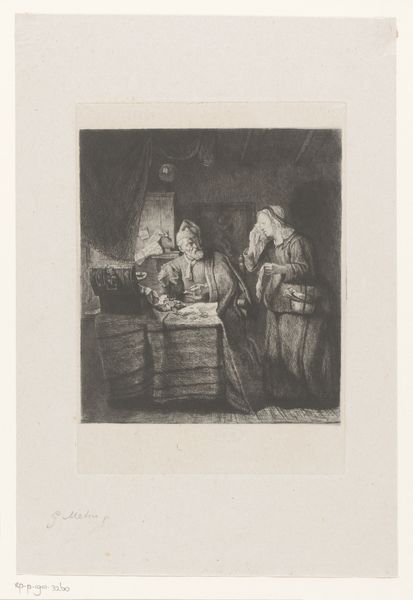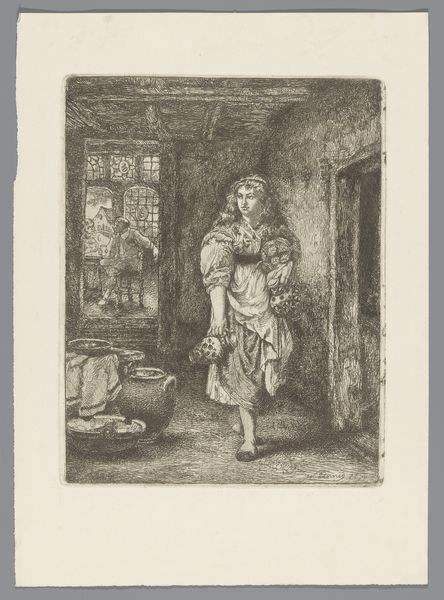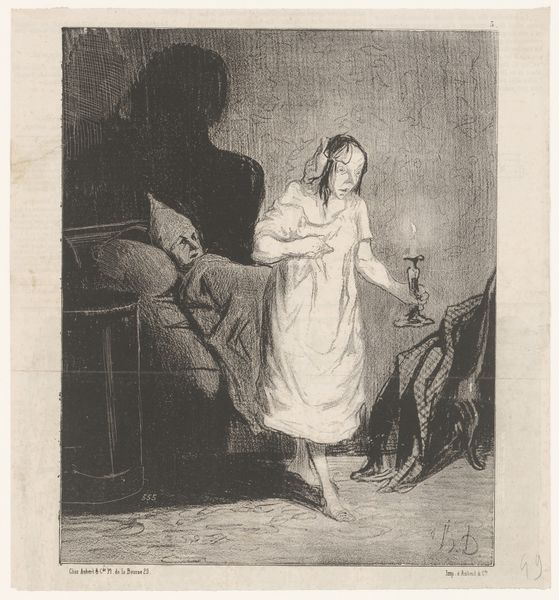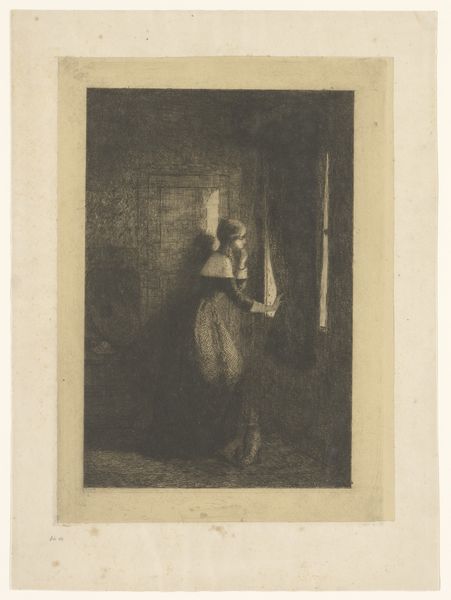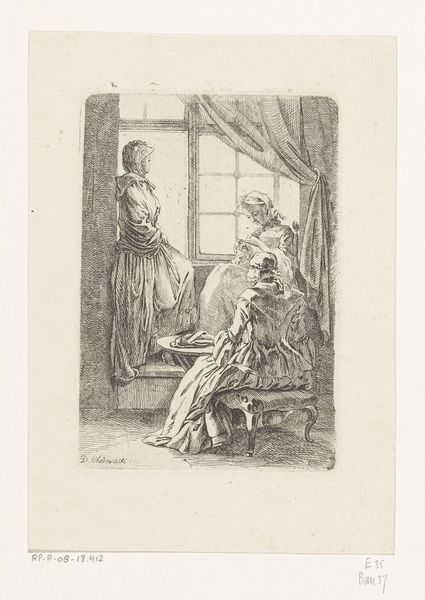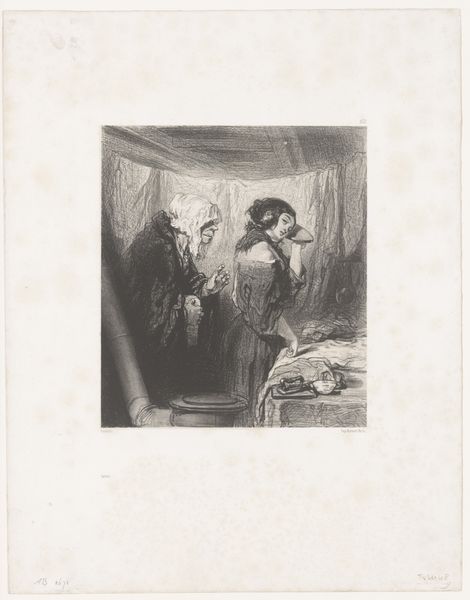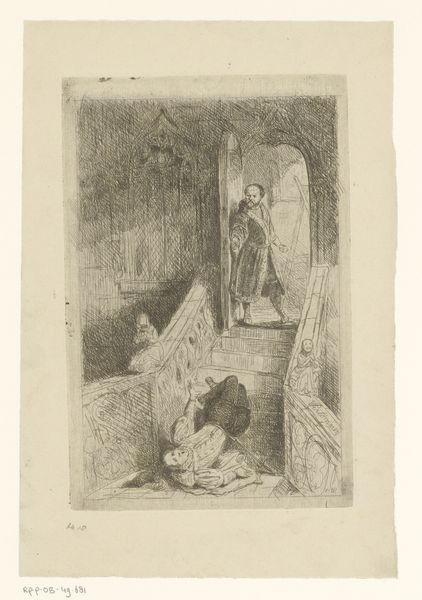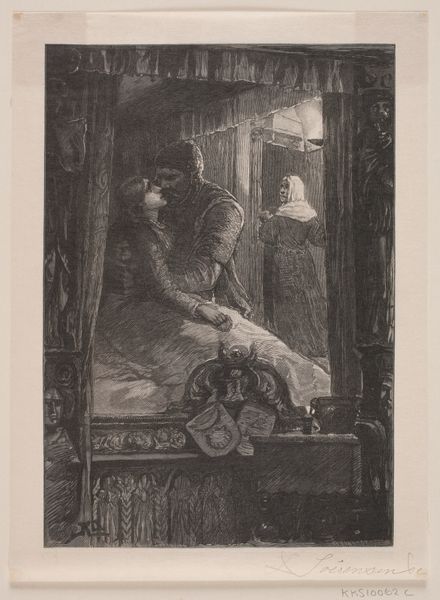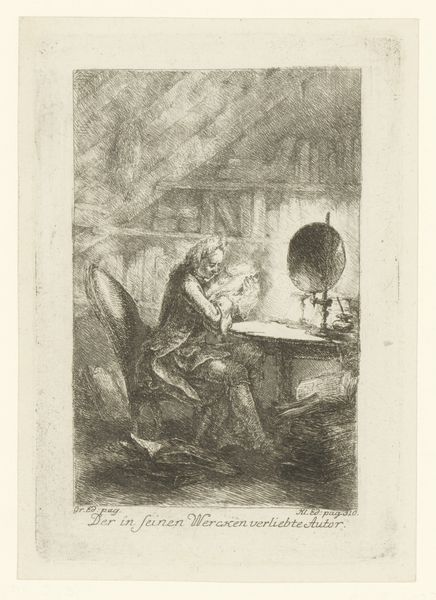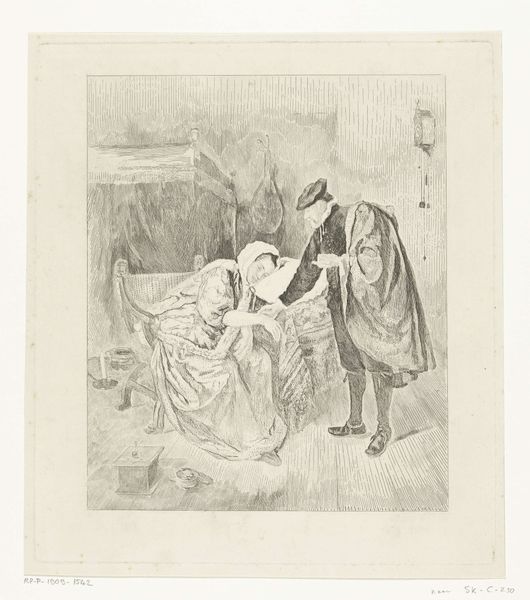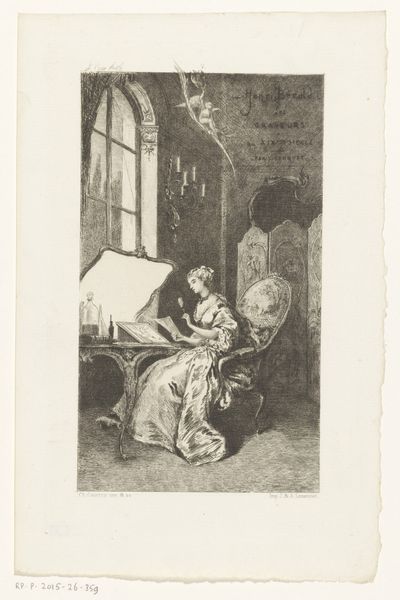
print, etching
#
portrait
# print
#
etching
#
figuration
#
genre-painting
Dimensions: height 227 mm, width 174 mm
Copyright: Rijks Museum: Open Domain
Curator: This etching by Willem Linnig the Younger, created in 1871, is titled "Two Roma Women in a Room with a Harp." Editor: My first thought is the stark contrast between the figures and the implied interior. There’s a softness to the women juxtaposed with the roughness of the etching—an almost unfinished quality to the architecture, drawing attention to the figures themselves. It really emphasizes the hand-worked nature of the print, seeing those visible marks of the etching needle. Curator: Indeed. Etchings such as this, were often used as a form of social documentation at the time. We see this romantic fascination with Roma people—or, perhaps more accurately, a stereotypical representation driven by the cultural imagination of the time. It's a glimpse into how genre scenes played a crucial role in shaping public perception. Editor: I find the depiction of labor conditions really interesting. Observe the textures – the patterns on the shawls, the ornate harp, the detailing on their dresses. I can almost feel the rough spun fabrics and admire the skill employed by whomever made the original garments which the artist saw fit to render into art. Who owned those materials? What class status is implied? And what was the etcher thinking about in rendering the textiles themselves? Curator: The setting within the Rijksmuseum adds layers to these questions. This work resides within an institution that, like many others, historically participated in constructing narratives about marginalized groups. Displaying this image forces us to consider the institution’s role in both preserving and shaping potentially problematic imagery. Editor: Exactly. It asks viewers to look not just at the figures represented, but the network of makers and their social stations who produced, consumed, and perhaps even wore some of the original materials shown in the art, challenging us to really think about our cultural history. Curator: That interplay of representation, material reality, and institutional context offers rich territory for consideration. It moves us beyond just aesthetic appreciation to consider broader issues of power and visibility. Editor: Agreed. A valuable provocation for anyone seeking a richer engagement with art's historical implications.
Comments
No comments
Be the first to comment and join the conversation on the ultimate creative platform.
